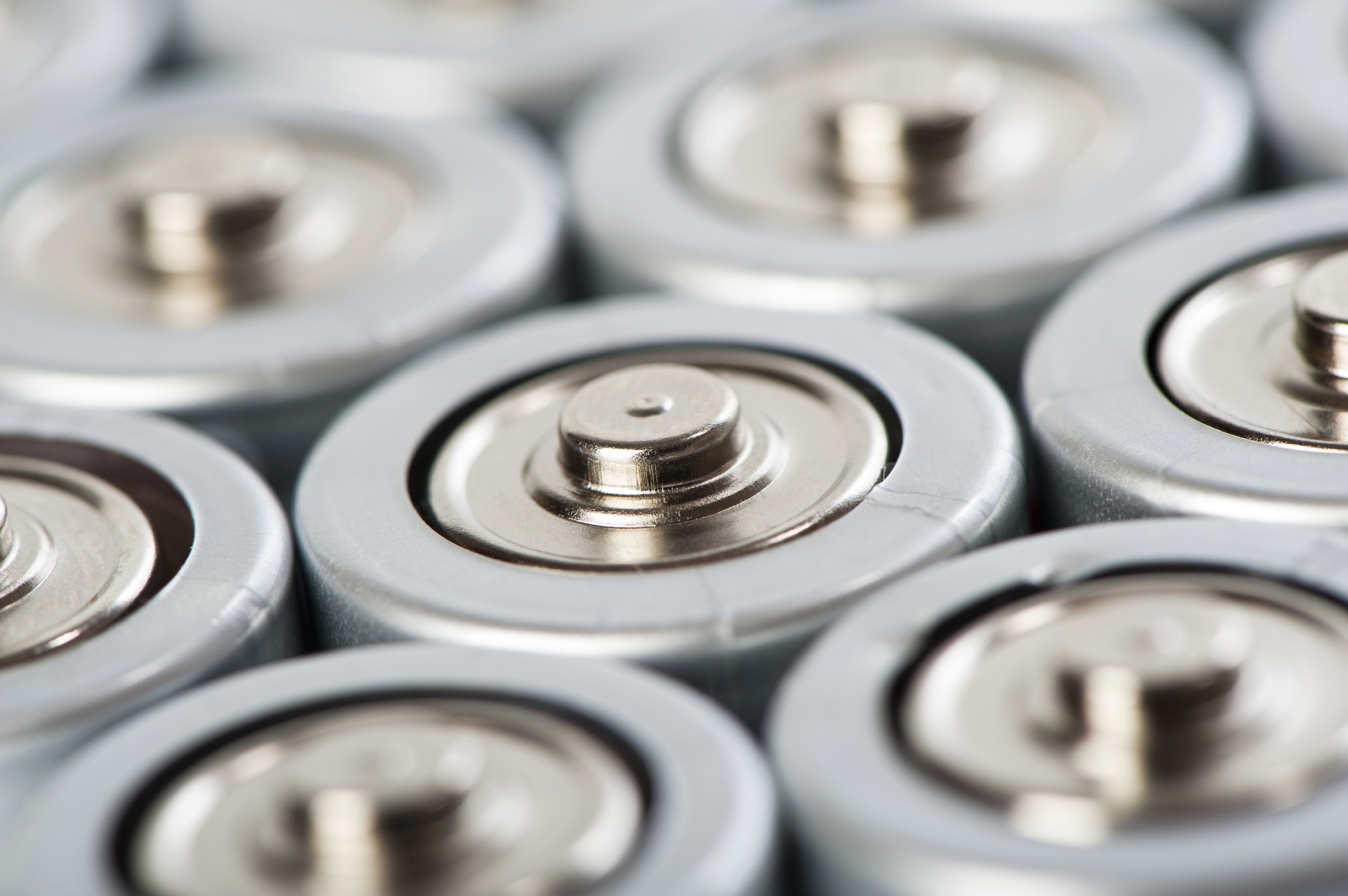Reviewed by Lexie CornerSep 16 2024
Scientists from Flinders University are pioneering the development of simple and practical polymer Aqueous Zinc-Ion Batteries (AZIBs) using organic cathodes. The goal is to create more environmentally friendly energy storage solutions. AZIBs could provide a cost-effective alternative using diverse feedstocks. The research was published in Energy Storage Materials.

Image Credit: art nick/Shutterstock.com
As the global supply of raw materials for lithium-ion batteries dwindles, experts are seeking safe, affordable, and reliable alternatives for rechargeable batteries.
“Aqueous zinc-ion batteries could have real-world applications,” said Zhongfan Jia, Associate Professor in Chemistry and Nanotech Researcher at the College of Science and Engineering at Flinders University.
The growing demand for lithium-ion batteries (LIBs) in electric vehicles and portable electronics has led to resource shortages and supply-chain issues for key metals like cobalt and lithium.
Future alternatives like AZIBs could help reduce the waste and environmental impact caused by millions of discarded batteries, most of which are not adequately recycled.
Among these alternatives, AZIBs stand out because of the much higher abundance of zinc in the earth's crust (ten times more than lithium) and their low toxicity and high safety.
Zhongfan Jia, Associate Professor and Nanotech Researcher, Department of Chemistry, College of Science and Engineering, Flinders University
In AZIBs, zinc metal serves as the anode, while organic or inorganic substances function as the cathode. Although significant progress has been made in stabilizing zinc anodes, producing high-performing cathodes remains a major challenge.
Our research is building conductivity using nitroxide radical polymer cathodes made from cheap commercial polymer and optimized the battery performance using low-cost additives.
Zhongfan Jia, Associate Professor and Nanotech Researcher, Department of Chemistry, College of Science and Engineering, Flinders University
Zhongfan Jia also leads a research group focused on Sustainable Polymers for Energy and Environment.
Our work reevaluated the use of high redox potential nitroxide radical polymers cathodes in AZIBs and produced the highest mass loading so far.
Zhongfan Jia, Associate Professor and Nanotech Researcher, Department of Chemistry, College of Science and Engineering, Flinders University
To create a lab-made pouch battery with a capacity of nearly 70 mAh g⁻¹ and a discharge voltage of 1.4 V, researchers led by Flinders master’s student Nanduni Gamage and Postdoctoral fellow Dr. Yanlin Shi used scaled-up polymer (costing about $20 per kg), a non-fluoro Zn (ClO4)2 electrolyte, and BP 2000 carbon black (costing $1 per kg) without the need for a binder.
The pouch battery achieved a capacity of 60 mAh with a mass loading of 50 mg cm-2, which is sufficient to power a model car and a small electric fan.
Researchers from Université Paris Est Creteil CNRS in France, including Dr. Jesús Santos-Peña, collaborated on the project with specialists from the Flinders University Institute for Nanoscale Science and Technology.
The research, published in Energy Storage Materials, was authored by Nanduni SW Gamage, Yanlin Shi, Chanaka J Mudugamuwa, Jesús Santos-Peña, David A Lewis, Justin M Chalker, and Zhongfan Jia.
The group has also developed organic radical/K dual-ion batteries in collaboration with Griffith University, which could reduce reliance on lithium-ion batteries. This study was published in the Journal of Power Sources by Zhenzhen Wu, Yanlin Shi, Chanaka J. Mudugamuwa, Pan Yang, Hao Chen, Yuhui Tian, Milton Kiefel, Shanqing Zhang, and Zhongfan Jia.
The research received funding from the Australian Research Council and the French-Australian International Research Network on Conversion and Energy Storage (IRN-FACES). The authors also acknowledge the Australian National Fabrication Facility (ANFF) SA node for supporting electroanalytical and electrochemical synthesis labs at Flinders University.
Journal References:
Gamage, S.W. N., et al. (2024) Converting a low-cost industrial polymer into organic cathodes for high mass-loading aqueous zinc-Ion batteries. Energy Storage Materials. doi.org/10.1016/j.ensm.2024.103731.
Wu, Z., et al. (2024) Morphological engineering of PTAm@CNTs cathode for high-rate potassium dual-ion battery. Journal of Power Sources. doi.org/10.1016/j.jpowsour.2024.235134.